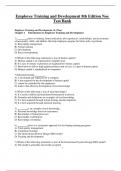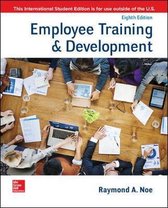Exam (elaborations)
Complete Test Bank Employee Training and Development 8th Edition Noe Questions & Answers with rationales (Chapter 1-11)
- Course
- Institution
- Book
Employee Training and Development 8th Edition Noe Test Bank Complete Test Bank Employee Training and Development 8th Edition Noe Questions & Answers with rationales (Chapter 1-11) PDF File All Pages All Chapters Grade A+
[Show more]




